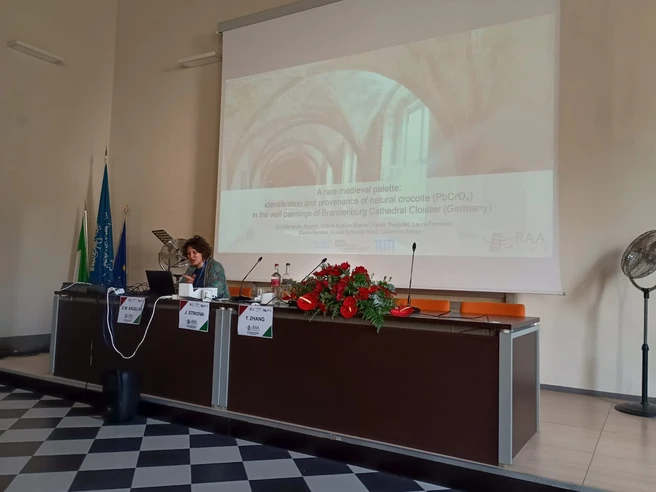At the Raman Spectroscopy in Art and Archaeology (RAA2025) conference in Pisa, the insiTUMlab presented groundbreaking results from the ongoing investigation of the late medieval wall paintings (c. 1440s) in the former library of the Brandenburg Cathedral Cloister.
An in situ analytical campaign carried out in 2024 identified crocoite (lead chromate, PbCrO₄) as the yellow pigment on the book covers depicted in the wall paintings. Crocoite is an exceptionally rare natural mineral pigment, scarcely documented in Europe and never before reported in Germany. Its detection was made possible by portable Raman spectroscopy and MA-XRF.
This discovery contributes significantly to our understanding of the medieval palette and raises new questions about pigment availability and trade networks in the 15th century. The study, conducted in collaboration with HAWK Hildesheim and the University of Parma, combines art-historical research with advanced scientific methods to explore the provenance of crocoite.
By presenting this work at RAA2025, the team shares not only a remarkable material discovery but also demonstrates the value of interdisciplinary approaches to cultural heritage research.
👉 More information about the research project can be found here.
